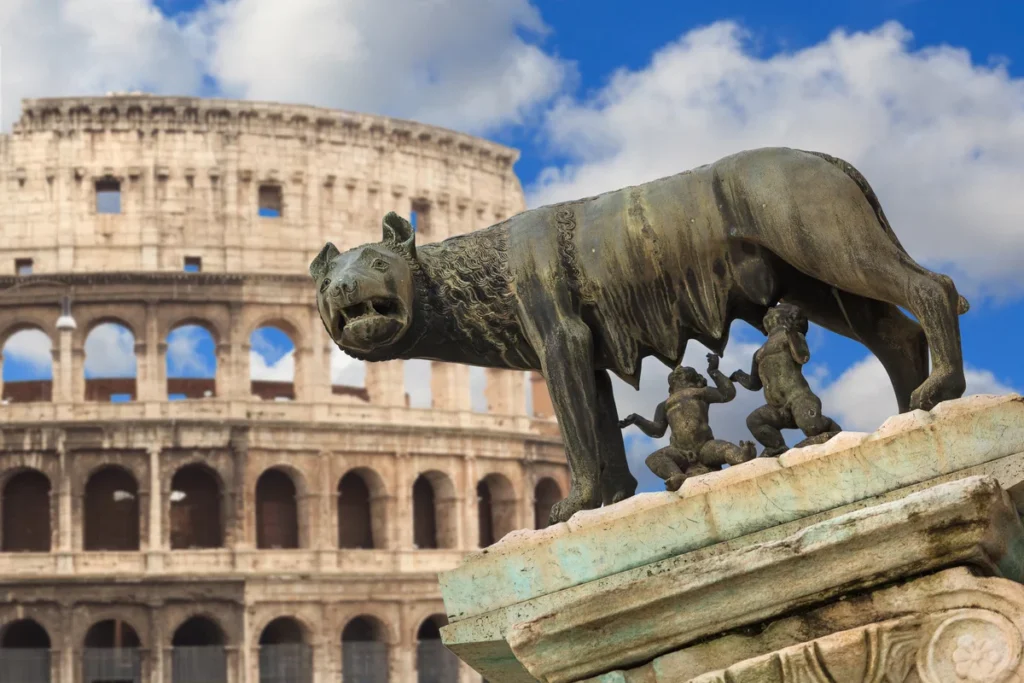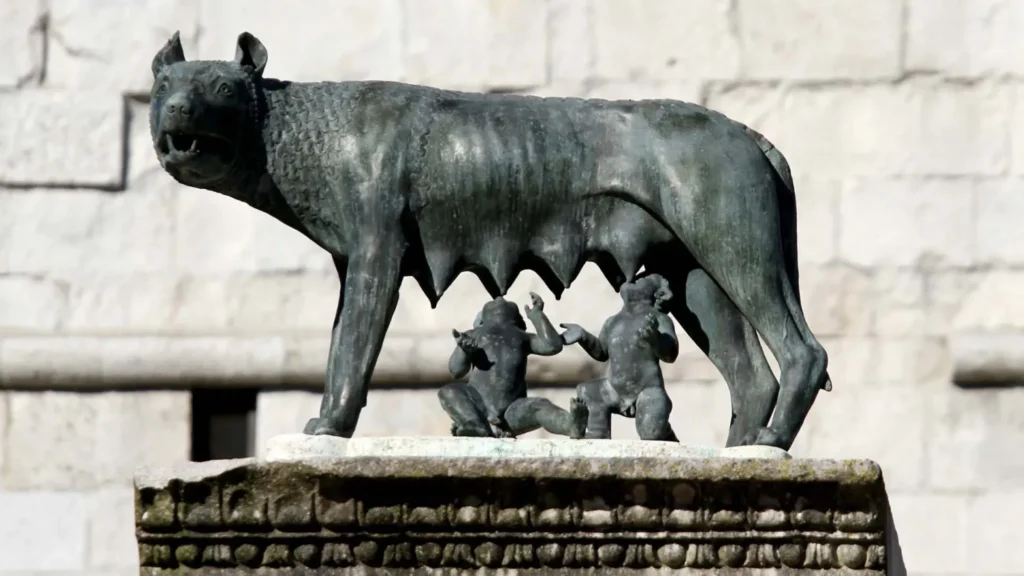The Capitoline Wolf (Italian: Lupa capitolina) is a bronze sculpture depicting a she-wolf suckling two human infants, Romulus and Remus, the legendary founders of Rome. It is one of the most recognizable symbols of the city of Rome and of Italy as a whole. The sculpture is currently housed in the Capitoline Museums on the Capitoline Hill in Rome.

History of the Capitoline Wolf
The origins of the Capitoline Wolf are uncertain, but it is believed to date back to the Etruscan period, between the 6th and 4th centuries BC. The sculpture was originally located on the Lupercal, a cave at the foot of the Palatine Hill, which was considered to be the sacred birthplace of Romulus and Remus.
In the 8th century AD, the Capitoline Wolf was moved to the Capitoline Hill, where it was placed on a pedestal in front of the Temple of Jupiter Capitolinus. The sculpture was rediscovered in the 15th century and was placed in the Palazzo dei Conservatori, one of the buildings that now houses the Capitoline Museums.
Symbolism of the Capitoline Wolf
The Capitoline Wolf has been a symbol of Rome for centuries. It represents the city’s strength, power, and resilience. The she-wolf is also seen as a symbol of motherhood and nurturing, and the twins Romulus and Remus represent the new beginnings and the potential of Rome.
The Capitoline Wolf has been used in a variety of ways to represent Rome. It has been depicted on coins, medals, and other works of art. It has also been used as the emblem of the city of Rome and of the Italian Republic.

The Capitoline Wolf Today
The Capitoline Wolf is one of the most popular tourist attractions in Rome. Visitors from all over the world come to see the sculpture and to learn about its history and symbolism. The Capitoline Wolf is a reminder of Rome’s rich history and its enduring legacy.
In addition to its historical and symbolic significance, the Capitoline Wolf is also a work of art in its own right. The sculpture is beautifully crafted and is a testament to the skill of the Etruscan artisans who created it. The Capitoline Wolf is a valuable piece of Roman history and art, and it is a reminder of the city’s long and storied past.
Interesting Facts about the Capitoline Wolf
- The Capitoline Wolf is one of the oldest bronze sculptures in the world.
- The sculpture has been restored several times over the centuries.
- The Capitoline Wolf was stolen by French troops in 1797 but was returned to Rome in 1816.
- A copy of the Capitoline Wolf stands in front of the City Hall in New York City.
The Capitoline Wolf is a powerful and enduring symbol of Rome. It represents the city’s strength, power, and resilience, and it is a reminder of Rome’s long and storied past. The Capitoline Wolf is a must-see for any visitor to Rome.





